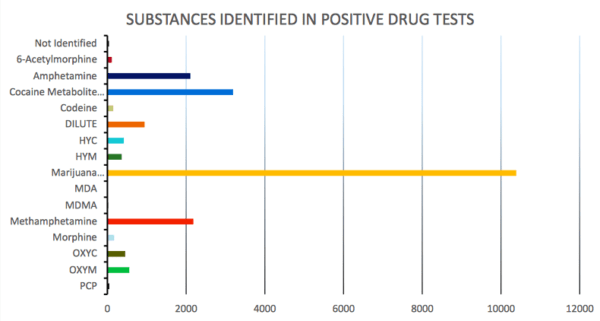July 2020 Newsletter
FMCSA Clearinghouse’s Top 8 Substances Drivers Tested Positive For
The Federal Motor Carrier Safety Administration (FMCSA) released a summary report of the violations compiled in the Drug and Alcohol Clearinghouse for the month of May. Alcohol violations contributed 20% of the violations while an overwhelming 80% were drug violations. See details and top substances of the 21,156 positive test results recorded in the Clearinghouse below.
Top 8 Substances Identified:
- Marijuana – 10,388
- Cocaine – 3,192
- Methamphetamine – 2,184
- Amphetamines – 2,108
- Oxymorphone – 556
- Oxycodone – 452
- Hydrocodone – 418
- Hydromorphone – 363
Drivers Now Have Until September to Renew Expired Certifications
Effective July 1st, the FMCSA extended the waiver that allows truck drivers to have additional time to renew their expired CDLs and other certifications.
Because of the COVID-19 pandemic, the FMCSA released the initial waiver on March 24, giving drivers an extension until June 30. Now, this new extension gives drivers whose CDLs and medical certifications expired on or after March 1 until September 30 to renew them.
Here are some things the waiver includes:
- Extends CDL validity until Sept. 30 for any CDLs due for renewal on or after March 1, 2020.
- Extends the validity period of CLPs (permits) until Sept. 30 that are due for renewal on or after March 1, 2020, “without requiring the CLP holders to retake the general and endorsement knowledge tests.”
- Waives the requirement that CDL holders, CLP holders, and non-CDL drivers have a medical examination and certification if they already had proof of valid medical certification for a period of 90 days or longer and that expired on or after March 1, 2020.
Inside Hours-of-Service Changes: How Driver Productivity and Safety Benefit
The new Hours-of-Service (HOS) changes will go into effect on September 29, 2020. The FMCSA expects this new ruling to increase driver productivity and, in turn, increase revenue as well. With more flexibility and improvements, they expect fewer violations on the road, which means fewer stoppages and more revenue for the drivers and businesses.
The final rule includes:
- Expanding the short-haul exception to 150 air-miles and on-duty limits to 14 hours.
- Extending the adverse driving conditions driving window by 2 hours.
Requiring a 30-minute break after eight hours of driving time.
Allowing an on-duty/non-driving period to qualify as the required break. - For the sleeper berth exception, allowing a driver to meet the 10-hour minimum off-duty requirement by spending at least seven hours of that period in the berth and a minimum off-duty period of at least two hours spent inside or outside of the berth. The two periods must total at least 10 hours and neither qualifying period can count against the 14-hour driving window.
- Although it can’t be predicted how this new ruling will pan out, this increase in flexibility will allow drivers to work more during their 14-hour window and allow them to be safer, especially when they get tired on the road.
Not only will the drivers benefit, but the FMCSA “anticipates carriers will see a 10-year cost savings of $2.8 billion due to the 30-minute break change.”




